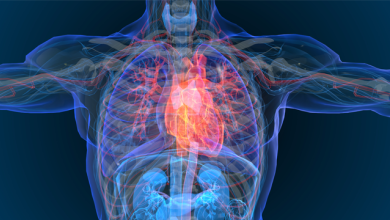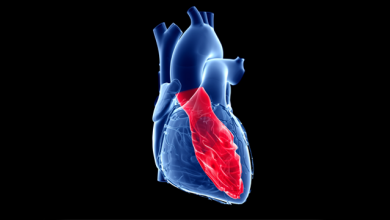Search results
Author(s):
Tolga Aksu
,
Jamario R Skeete
,
Henry H Huang
Added:
1 year ago
Defining LBBB Patterns in CRT
Author(s):
Roderick Tung
,
Gaurav A Upadhyay
Added:
3 years ago
Article
Author(s):
Dario DiFrancesco
Added:
3 years ago
HCN4 (hyperpolarisation-activated, cyclic nucleotide gated 4) channels, the pore-forming α–subunits of ‘funny’ channels originally described in pacemaker cells of the sinoatrial node (SAN),1 are responsible for the early phase of diastolic depolarisation in these cells and are key determinants of pacemaker generation and control of heart rate.2–5 HCN4 channels are selectively expressed in the SAN…
View more
Author(s):
Pasquale Santangeli
,
Luigi Di Biase
,
Eloisa Basile
,
et al
Added:
3 years ago
The number of invasive electrophysiological procedures is steadily increasing in Western countries, as techniques advance and the age of the population increases. Gender exerts a profound influence on the epidemiology, pathophysiology and clinical presentation of many cardiac rhythm disorders, and all these factors may affect the outcome of invasive electrophysiological procedures. Disturbingly,…
View more
Author(s):
Ameeta Yaksh
,
Lisette JME van der Does
,
Eva AH Lanters
,
et al
Added:
3 years ago
Cardiac arrhythmias during pregnancy pose a serious threat to the health of both mother and foetus. Women with established tachyarrhythmias, congenital heart defects or channelopathies have the highest risk for development of arrhythmias.1,2 They also develop de novo or occur in women without apparent heart diseases. Tachyarrhythmias, including both supraventricular and ventricular tachycardias,…
View more
Author(s):
Wei-Yao Lim
,
Sandeep Prabhu
Added:
3 years ago
The number of cardiac implantable electronic devices (CIED) has been increasing year-on-year.1 This, coupled with improvements in life expectancy,2 means that more elderly patients will meet the criteria for a CIED. National and international guidelines set out clear criteria and make recommendations for CIED use based on available evidence.3–6 However, the majority of clinical trials include few…
View more
Author(s):
Fatima M Ezzeddine
,
Isaac G Leon
,
Yong-Mei Cha
Added:
8 months ago
Author(s):
David Hamon
,
Jane Taleski
,
Marmar Vaseghi
,
et al
Added:
3 years ago
Orthotopic heart transplantation (OHT) is the most effective long-term therapy for end-stage heart disease, with implanted left ventricular assist devices (‘destination therapy’) as an alternative for selected patients. The denervation of the transplanted heart with complete loss of autonomic nervous system modulation, the use of immunosuppressant drugs, as well as the risk of allograft rejection…
View more
Author(s):
Parikshit S Sharma
,
Pugazhendhi Vijayaraman
Added:
3 years ago
Author(s):
Luuk Heckman
,
Justin Luermans
,
Floor Salden
,
et al
Added:
2 years ago















 « First
« First